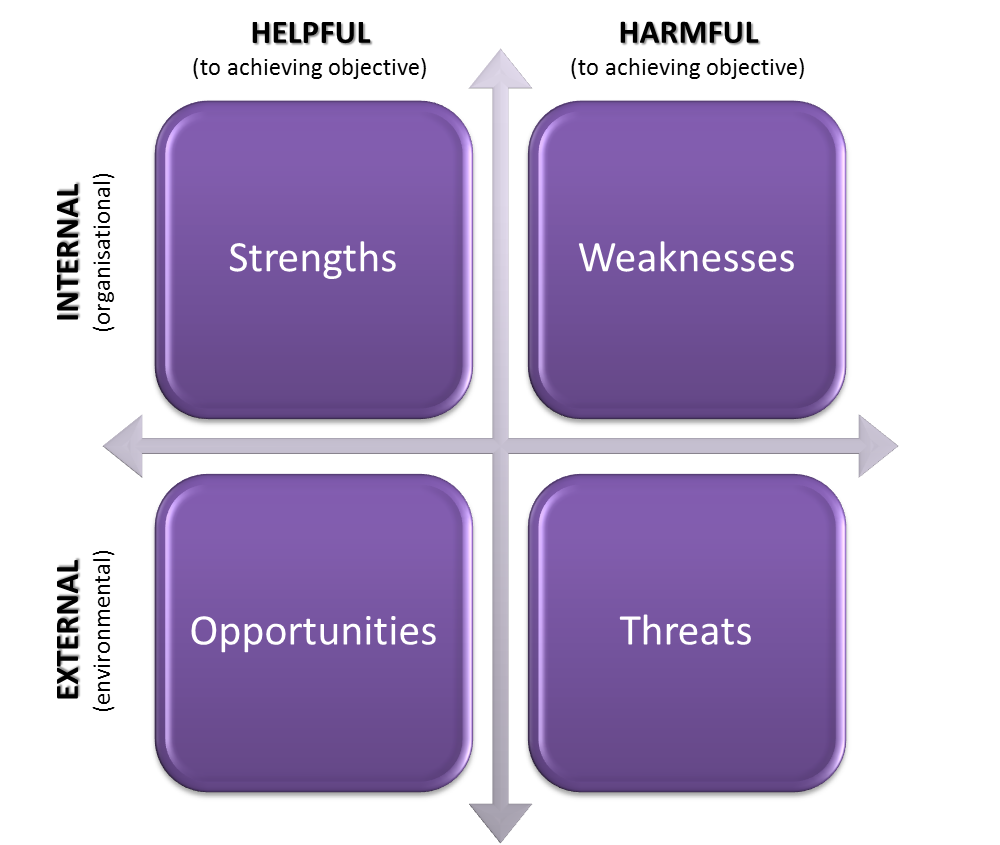If you are looking to get bank funding for starting your business, or even to expand and develop it, you will be asked to produce a business plan to present to potential lenders. A key part of this plan is a SWOT analysis, which will help you to identify whether you business is likely to succeed and plan to maximise its chances.
The beauty of a SWOT analysis lies in its simplicity. The concepts are easy to understand, even for someone who has not performed any form of strategic planning before. By making you think about your project or business in terms of harmful or helpful, external and internal factors you can present a convincing case for success in your business objectives, either simply to give yourself peace of mind and focus, or as a tool to help secure funding from external sources.
What is a SWOT Analysis?
SWOT is a strategic planning methodology that looks at analysing the Strengths, Weaknesses, Opportunities and Threats facing your business or project and allowing you to identify achievable objectives. SWOT can be used for evaluating almost anything from working out if a partnership is viable, to making decisions about your personal life, the template encourages clear and positive thinking allowing you to make informed decisions. The basics of SWOT as defined by Wikipedia are outlined below:
Strengths: internal characteristics of the business, or project team that give it an advantage over others
Weaknesses: internal are characteristics that place the business or project team at a disadvantage relative to others
Opportunities: external chances to improve performance (e.g. make greater profits, number of potential costumers) in the environment
Threats: external elements in the environment that could cause trouble for the business or project
It is important to try and keep things simple. Whatever the purpose of your SWOT keep the question clear in your mind and ensure you are staying focused on the central issue. This is especially important when others are involved in the process as all parties need to be able to understand the finished analysis and clearly see the implications and outcomes.
How To Perform a SWOT Analysis
Many people find the most effective method of performing a SWOT Analysis is to use a table template, so that the information is clearly displayed in the 2 X 2 grid. After you have prepared your grid, define the question, issue or proposition very distinctly in your mind and write it down at the top of the form.
Depending on the topic being considered SWOT could then follow the form of brainstorming (either with others or alone) the individual areas and/or a period of research to find the facts that back up the points you are making and potentially unearth more.
Research can be performed through various means such as searching for competitors on the internet, visiting the area concerned, making preliminary calls to potential customers, looking at previous figures, examining case studies of similar projects, customer surveys or visiting the record office or library.
Decision making
SWOT analysis is a simple thought-provoking tool that can and should be used by anyone looking to make informed strategic decisions. For a small business owner it is essential, as quite often passion and personal opinions can confuse the process and SWOT allows thoughts to be clearly presented, processed and examined in order to see the best ay forward. Quite often banks and other funding providers will want to see a SWOT analysis as part of a business plan, but their usefulness certainly doesn’t end there. Getting into the habit of performing SWOT can help you ensure that you make the best decisions to keep your business thriving.


